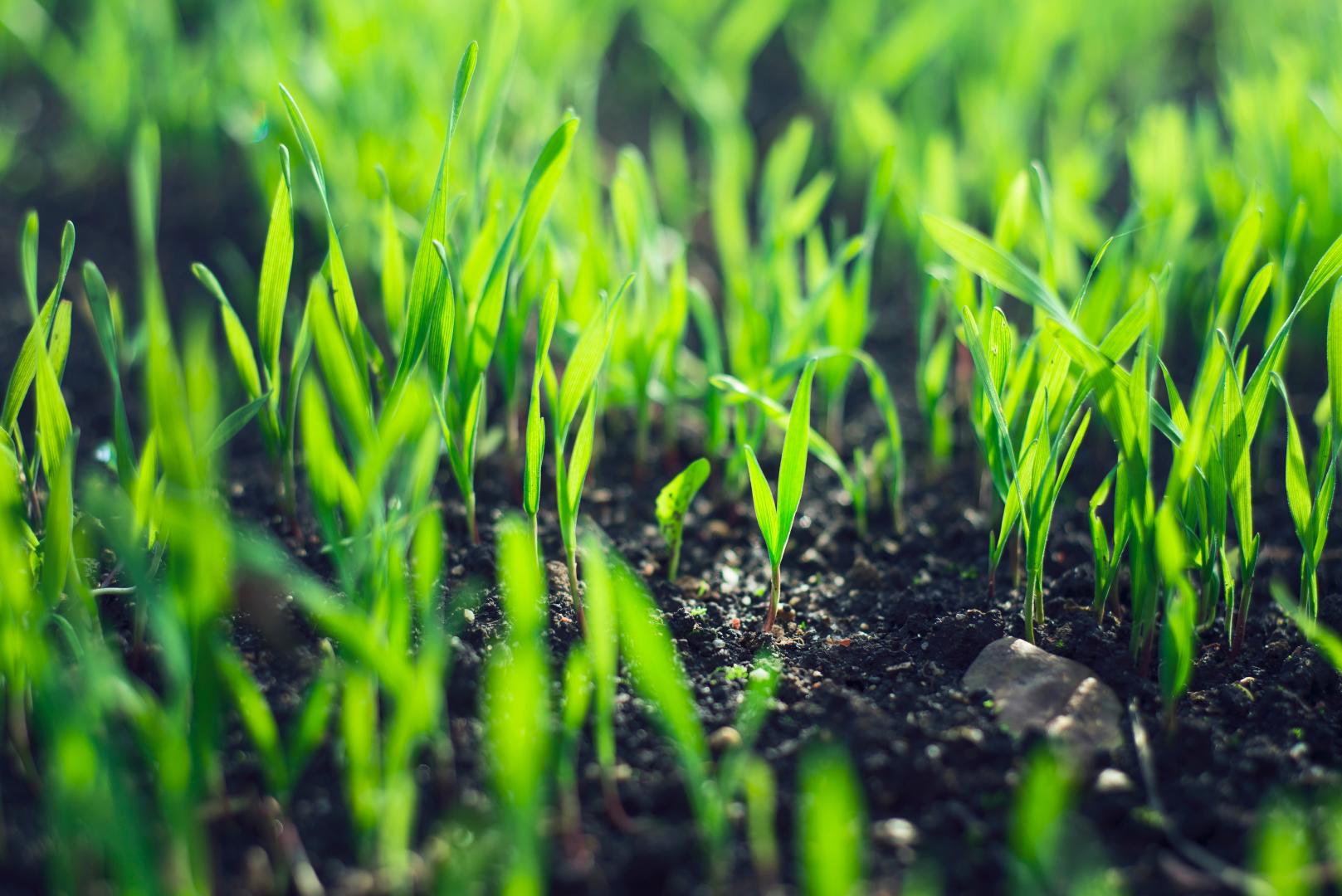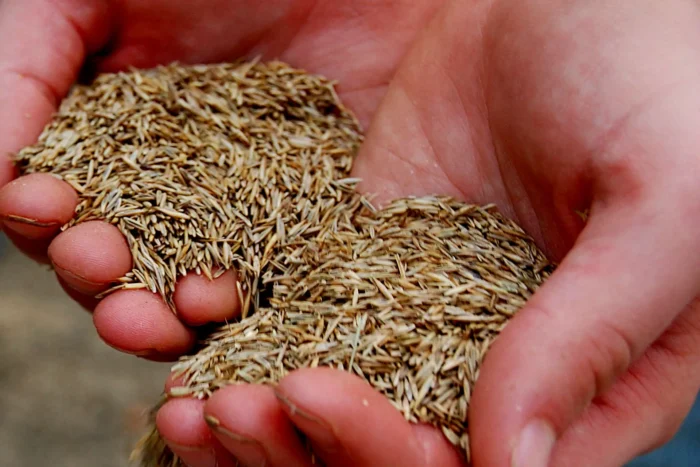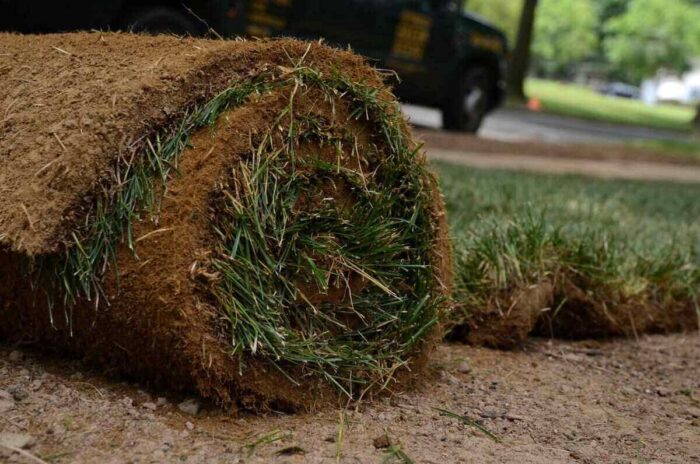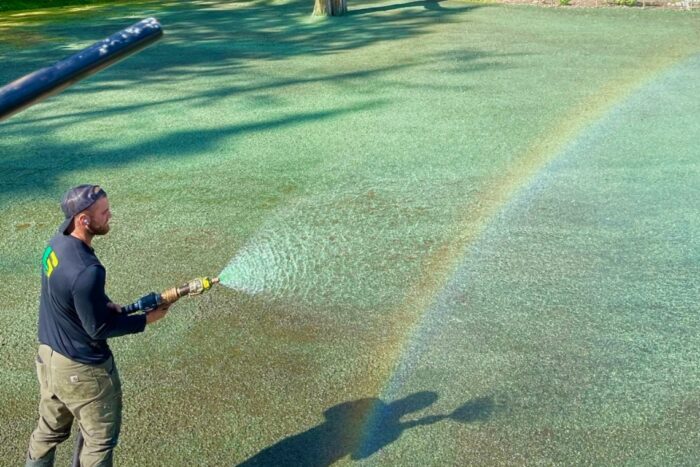
The versatility of gardening and lawn maintenance has witnessed exponential growth over the years. With the advent of different techniques and methods, this growth can be attributed to two key methods: hydroseeding and traditional seeding.
When it comes to lawn care, there are numerous factors to consider, the lay of the land, soil type, climate, budget, time frame, and much more.
Each seeding method has its unique strengths and areas of application. Hydroseeding, a technique that involves planting seeds with a mixture of water, mulch, and fertilizers, is increasingly popular for its numerous benefits.
On the other hand, traditional seeding, the time-tested method, involves planting seeds directly into the soil. This article will explore these two techniques including their origin, process, areas of application, cost, and benefits.
What is Hydroseeding?
Renowned for its efficiency and maximum yield, hydroseeding is an innovative planting process that involves a slurry of green-colored mulch, seeds, water, and sometimes a tackifier, a substance used to hold the mixture together.
A hydroseeding company typically sprays this slurry onto a prepared ground in a uniform layer, providing the perfect conditions for seed germination.
This method allows for a smooth layer of greenery to start sprouting within a week while reaching maturity in three to four weeks, given the right weather and watering conditions.
The origins of hydroseeding date back to the 1940s in the United States when it was first used for highway and slope restoration. Today, this method has diversified its applications and is widely used in residential lawns, highway medians, and even erosion control.
The benefits extend beyond its fast growth rate with hydroseeding offering long term soil stabilization, cost-effectiveness for large areas, and an environmentally friendly solution.
What is Traditional Seeding?
The process of traditional seeding, also commonly known as broadcast seeding, is the age-old method of introducing new plants into the soil. The simplicity of this process has been at the heart of agricultural practices and home gardening for centuries.
Traditional seeding involves manually scattering seeds across a prepared soil surface, covering them lightly, and allowing them to grow naturally.
This technique is generally straightforward and requires minimal equipment, a spreader for seed dispersal and basic watering tools, making it a go-to option for many garden and lawn enthusiasts.
The history of traditional seeding runs parallel with the advent of agriculture itself, with evidence showing its practice as far back as 10,000 BC. Over the years it has remained a firm favorite due to its accessibility and the allure of a natural process.
It can cater to a vast array of plant types, from crops to wildflowers and lawns, making it a popular choice for diverse applications.
Despite requiring more time and regular maintenance, traditional seeding holds its sway due to its lower upfront costs and the satisfaction of nurturing a plant from seed to full growth.
Cost Analysis of Hydroseeding and Traditional Seeding

When it comes to hydroseeding, the costs can vary depending on the size of the area to be covered, the type of mulch used, the seed mixture, the use of amendments and tackifiers, and the services of the hydroseeding company.
Generally, the cost per square foot decreases as the size of the area increases due to the economics of scale. On average, hydroseeding can range from $0.06 to $0.20 per square foot. This calculation includes labor costs, equipment usage, and procurement of material.
Traditional seeding costs involve soil preparation, purchase of seeds, fertilizers, and either manual labor or a mechanical spreader for seed distribution. The average cost per square foot of traditional seeding can range from $0.02 to $0.10.
This difference in cost is primarily due to the lower material costs and lesser need for specialized equipment. It’s important to note that while the upfront costs are lower, ongoing upkeep can add to the total cost over time as regular watering, fertilizing, and possible reseeding may be necessary.
Ultimately, the costs of both methods vary significantly based on the size and specifics of the project, the region, and individual supplier costs.
Benefit Analysis of Hydroseeding and Traditional Seeding

Hydroseeding comes with a range of significant advantages. The first is its efficiency. A hydroseeding company can cover large areas in a short amount of time, making it highly time-effective for larger projects.
Once sprayed, the hydroseed mix offers a protective layer that minimizes soil erosion and retains moisture, significantly improving the seed germination rate and leading to a dense, healthy lawn.
Hydroseeding is also known for establishing a strong root system which often results in better long-term outcomes than sod. The customizability of the seed-mix to the specific needs of your lawn is an additional benefit that hydroseeding offers.
Traditional seeding is an entirely natural process that doesn’t demand any specialized equipment. This makes it a cost-effective and appealing route for smaller lawns or for gardeners on a budget.
Although this method requires more time and care for growth, it gives the satisfaction of growing a lawn from scratch, thereby nurturing a healthier and stronger root system.
Traditional seeding also offers a greater variety of grass types to choose from, enabling you to pick the perfect fit for your lawn’s soil and climatic conditions.
Ultimately, both techniques offer different benefits and the choice between the two will heavily depend upon your specific needs, budget, and timeframe.
Conclusion

Both hydroseeding and traditional seeding present strong options for lawn care and maintenance, each embodying its distinct strengths and considerations.
Choosing between these two methods personal preferences, specific project requirements, available resources, and long-term maintenance expectations should be factored in to achieve desirable results.














